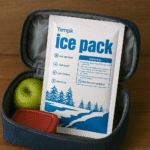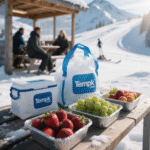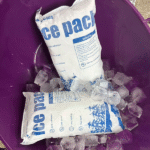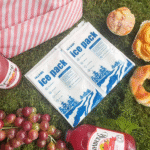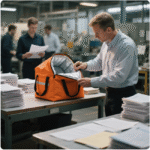À medida que os medicamentos e vacinas sensíveis à temperatura proliferam, o pharma cold chain industry has become the backbone of global healthcare logistics. Quer você gerencie remessas ou desenvolva terapias, you need to understand how technology, regulation and sustainability collide in 2025. This comprehensive guide answers your biggest questions with up to date data, practical examples and actionable insights. We include 2025 tendências, regulatory updates and tips to boost efficiency and compliance. Atualizado novembro 24 2025, this article equips you to protect product integrity and reduce costs.

What is a cold chain and why is it essential in pharmaceuticals?
How do temperature data loggers and monitoring tools safeguard product quality?
What challenges and solutions define the pharma cold chain in 2025?
How can sustainability and digitalisation improve cold chain operations?
Quais são as últimas tendências, regulations and market developments?
What Is a Pharma Cold Chain and Why Is It Essential?
Resposta direta: A cold chain is a temperature controlled supply chain that uses refrigeration and monitoring to maintain the quality of perishable products such as pharmaceuticals and vaccines. Without consistent temperatures, biologic drugs can lose potency and vaccines may become ineffective. In the pharma cold chain industry, maintaining defined temperature ranges (often 2–8 °C for refrigerated drugs and as low as −80 °C for ultra cold products) ensures patient safety, regulatory compliance and brand trust.
Explicação expandida: Imagine delivering ice cream on a summer day without refrigeration—it melts, loses value and disappoints your customers. The same principle applies to biopharmaceuticals: proteins and enzymes degrade when exposed to heat. A pharma cold chain therefore employs insulated packaging, veículos com temperatura controlada, and warehouse refrigeration to keep products within narrow ranges. According to the International Institute of Refrigeration, common cold chain cargo includes perishable food, chemicals and produtos farmacêuticos. Logistics teams must adhere to Good Distribution Practices (PIB) and product specific stability profiles while contending with delays, customs checks and varying climates. As biologic therapies and mRNA vaccines grow, the cold chain industry is expanding rapidly to meet demand.
Temperature Monitoring and Data Loggers
UM registrador de dados de temperatura is a portable instrument that autonomously records temperature over time and is commonly used to monitor shipments in a cold chain\nA” >. It ensures your cargo stays within specified ranges and provides traceability for audits. Modern loggers often include sensors, radio frequency identification (RFID) and cloud connectivity so you can track shipments in real time. Data loggers are indispensable for verifying compliance and preventing losses.
| Faixa de temperatura | Example Products | Significado para você |
| 2–8 ° C. | A maioria das vacinas, insulina, Anticorpos monoclonais | Ensures biologic integrity; deviations can render drugs ineffective |
| −20°C | Biológicos congelados, some cell therapies | Requires specialized freezers and packaging; thawing leads to product loss |
| −70 to −80 °C | Vacinas de mRNA, gene therapy vectors | Demands ultra cold equipment and dry ice; transportation is complex |
| 15–25ºC (Temperatura ambiente controlada) | Tablets, topical medicines | Still requires monitoring because heat or cold can degrade active ingredients |
Dicas e sugestões práticas
For clinical trial supplies: Use data loggers with real time alerts so you can intervene if temperatures drift.
For last mile delivery: Incorporate phase change materials (PCMs) to stabilize temperature during hand off and avoid thermal shock.
For returns and recalls: Implement a procedure for quarantining and inspecting products exposed to excursions; do not reship without stability data.
Estudo de caso: Durante um 2024 COVID 19 booster campaign, a regional distributor used IoT enabled data loggers to track vaccine temperatures across 500 Clínicas. When a heatwave caused one delivery truck’s refrigerator to fail, the central team received an alert, rerouted the driver to a nearby facility and salvaged 90 % of the doses. The post campaign audit showed a 35 % reduction in product loss compared with previous seasons.
Key Challenges and Solutions in 2025
The pharma cold chain industry faces numerous challenges: stringent regulations, product complexity, cost pressures and sustainability demands. This section explores the pain points and offers practical solutions.
How Do Regulations and Compliance Impact You?
Resposta direta: Regulations require manufacturers and distributors to maintain specific temperature ranges, track shipments and document every step. Em 2025, regulators are tightening Good Distribution Practice (PIB) diretrizes, mandating digital records and risk based quality systems, so non compliant companies risk fines and product recalls.
Explicação expandida: Different markets have distinct guidelines—such as the EU GDP, NÓS. FDA guidelines and WHO’s Technical Report Series. Many countries now require Electronic Product Code Information Services (EPCIS) for serialization and traceability. As gene and cell therapies become more common, authorities expect proof that ultra cold conditions are maintained throughout distribution. Para cumprir, you should implement continuous temperature monitoring, calibrate equipment regularly and train staff. Quality systems must include risk assessment, deviation management and corrective actions.
What Are the Costs and Logistical Complexities?
Resposta direta: Operating a cold chain is expensive—specialized packaging, refrigerated trucks and energy consumption increase costs. Em 2025, labour shortages and rising fuel prices further squeeze margins, forcing companies to optimize routes and leverage technology.
Explicação expandida: Cold chain logistics require refrigerated containers, armazéns, Materiais isolantes, dry ice and backup power. Temperature excursions lead to product waste, increasing insurance premiums and replacement costs. Airlines and shipping lines restrict dry ice quantities, complicating planning. To control costs, companies are using AI driven route optimization, predictive maintenance to prevent equipment failure, and load consolidation to improve vehicle utilization. Collaboration with third party logistics (3Pl) providers and leasing rather than buying equipment can also reduce capital expenditure.
How Does Technology Address Visibility and Risk?
Resposta direta: Technology enhances visibility by providing real time data on temperature, localização e umidade. Em 2025, Internet das coisas (IoT) sensores, blockchain and predictive analytics enable proactive risk management and allow companies to intervene before deviations occur.
Explicação expandida: IoT devices monitor environmental conditions and transmit data via cellular networks. When combined with machine learning, this data predicts equipment failures and suggests adjustments to maintain stability. Blockchain can store immutable records of temperature data, ensuring transparency and authenticity. Cloud platforms integrate these technologies to offer dashboards, alerts and analytics for decision makers. By integrating with Enterprise Resource Planning (ERP) sistemas, companies can automate documentation and regulatory reporting, reducing manual errors.
What About Sustainability and Waste Reduction?
Resposta direta: A sustentabilidade não é mais opcional. Em 2025, pharma companies must reduce carbon emissions, packaging waste and energy consumption while preserving product integrity. Sustainable solutions include reusable thermal packaging, solar powered refrigeration and route planning that minimizes emissions.
Explicação expandida: Traditional cold chain operations rely heavily on single use EPS (poliestireno expandido) containers and diesel powered refrigeration units. These materials contribute to landfill waste and greenhouse gases. Many companies are now adopting reusable vacuum insulated shippers (VIS) and phase change materials that maintain temperature longer with less energy. Solar panels on warehouse roofs and electric refrigerated vehicles reduce carbon footprints. Regulations and corporate social responsibility programs push for sustainable procurement and supply chain transparency. By measuring carbon emissions and choosing eco friendly materials, you can align with sustainability goals and appeal to environmentally conscious customers.
H3: Workforce and Training Challenges
A skilled workforce is essential for maintaining cold chain integrity. No entanto, labour shortages and high turnover in logistics create knowledge gaps. Para mitigar o risco, invest in training programmes that cover GDP requirements, equipment handling and emergency procedures. Augmented reality (RA) tools can guide workers through packaging processes and equipment maintenance. Cross training employees ensures redundancy when key personnel are absent. Incentive programmes and career development pathways help retain talent.
| Training Focus | Descrição | Beneficiar para você |
| GDP compliance | Procedures for handling, storage and documentation | Reduces regulatory violations |
| Equipment operation | How to use refrigerators, freezers and data loggers | Minimizes equipment malfunction and excursions |
| Emergency response | Steps to take when temperature deviations occur | Ensures quick mitigation and product safety |
| Práticas de sustentabilidade | Use of reusable packaging and recycling | Aligns with corporate sustainability goals |
Practical Tips for Tackling Challenges
Establish a robust Quality Management System: Document processes, perform regular audits, and implement corrective actions.
Aproveite a análise preditiva: Use historical temperature and shipment data to forecast risks and proactively prevent deviations.
Colabore com fornecedores: Share data and standardize packaging to ensure consistency across the supply chain.
Estudo de caso: A biologics manufacturer implemented AI driven route optimization and reduced transit times by 15 %, saving US$ 1.2 million annually in fuel and product loss. They also switched to reusable thermal containers, cutting packaging waste by 40 %.
Digitalisation and Smart Cold Chain Innovations
Technology is transforming cold chain operations. Em 2025, digitalisation includes IoT sensors, inteligência artificial, blockchain and robotics, all working to maintain product integrity and improve efficiency.
How Are IoT and Real Time Monitoring Changing the Cold Chain?
Resposta direta: IoT sensors provide continuous, real time data on environmental conditions and location. Em 2025, they enable predictive maintenance, automated alerts and remote interventions to avoid temperature excursions.
Explicação expandida: Modern IoT devices are small, cost effective and can monitor temperature, umidade, vibration and even light exposure. They transmit data via cellular, LoRaWAN or satellite networks to cloud platforms accessible through dashboards. Machine learning algorithms analyze patterns to predict when a refrigerator might fail, prompting preventive maintenance. Além disso, geofencing allows alerts if a shipment deviates from its intended route. By integrating with data loggers and packaging sensors, IoT platforms provide a holistic view of supply chain performance.
How Does Blockchain Enhance Traceability?
Resposta direta: Blockchain creates a secure, tamper proof ledger of all transactions and temperature records. Em 2025, pharmaceutical companies use blockchain to verify product authenticity and compliance while enabling seamless audits.
Explicação expandida: Each transaction in a cold chain—from manufacturing to delivery—is recorded as a block in a distributed ledger. Once recorded, the data cannot be altered, which prevents fraud and ensures transparency. Smart contracts can trigger automatic release of shipments or insurance payments when conditions are met. Blockchain also facilitates multi party collaboration by allowing manufacturers, distribuidores, regulators and patients to access verifiable data. Por exemplo, a health authority can confirm that a vaccine maintained required temperatures throughout distribution before releasing it to clinics.
What Role Do Robotics and Automation Play?
Resposta direta: Robotics automate repetitive tasks like packing, sorting and moving goods, increasing accuracy and speed. Em 2025, automated warehouses and last mile delivery robots reduce labour costs and mitigate human error.
Explicação expandida: Veículos guiados automaticamente (AGVs) and autonomous mobile robots (RAM) transport pallets within cold storage facilities, minimizing manual handling. Robotic arms assemble shipping containers with precise amounts of coolant and packaging, ensuring consistent performance. Drones deliver small batches of vaccines to remote locations, bypassing traffic and improving access to care. Automation not only saves time but also reduces contamination risks and improves worker safety in ultra cold environments.
H3: Inteligência Artificial e Análise Preditiva
Inteligência artificial (IA) analyzes large datasets to predict demand, optimize routes and identify risk patterns. Por 2025, AI tools help supply chain managers make data driven decisions, reduzindo o desperdício e melhorando os níveis de serviço. Por exemplo, AI can forecast inventory needs based on disease outbreaks and weather patterns, ensuring stock availability without overstocking. It can also simulate different packaging options to identify the most cost effective solution that meets temperature requirements.
| Digital Innovation | Aplicativo | Beneficiar para você |
| Sensores de IoT | Monitoramento de temperatura em tempo real, umidade e localização | Proactive interventions and regulatory compliance |
| Blockchain | Immutable record of shipment history and conditions | Verifiable traceability and anti counterfeiting |
| IA & ML | Predictive maintenance and demand forecasting | Reduced downtime and optimized inventory |
| Robótica | Embalagem automatizada, sorting and delivery | Lower labour costs and improved accuracy |
Practical Tips for Embracing Digitalisation
Comece com um projeto piloto: Choose a high value product and deploy IoT sensors and analytics to prove ROI.
Integrar sistemas: Connect your IoT platform with ERP and Transportation Management Systems (EMT) for seamless data flow.
Consider cybersecurity: Secure devices and networks to protect sensitive data and prevent tampering.
Estudo de caso: A vaccine manufacturer integrated blockchain with IoT sensors across its distribution network. The system provided end to end traceability and reduced investigation time for temperature deviations by 70 %. The transparency improved relationships with regulators and payers.
Sustentabilidade: Green Strategies for Cold Chain Logistics
Sustainability is a key priority for pharma companies and their supply chain partners. Reducing carbon footprints, minimizing waste and using renewable energy are central to modern cold chain strategies.
How Can You Reduce Packaging Waste?
Resposta direta: Switching from single use to reusable, recyclable or biodegradable materials is the primary way to cut waste. Em 2025, many companies use vacuum insulated panels (VIPs), materiais de mudança de fase (PCMs) and return logistics to slash packaging waste.
Explicação expandida: Single use EPS containers often end up in landfills. Reusable thermal boxes made of VIPs provide superior insulation and can be used dozens of times, reduzindo o desperdício e os custos a longo prazo. PCMs maintain a stable temperature for longer periods, allowing smaller and lighter packages. Implementing reverse logistics programs encourages customers to return empty containers for cleaning and reuse. Leveraging local depots reduces transportation distances and emissions associated with returns.
What Are the Benefits of Renewable Energy and Electric Vehicles?
Resposta direta: Renewable energy sources and electric vehicles cut greenhouse gas emissions and operating costs. Por 2025, solar powered warehouses and electric refrigerated trucks are viable options for many logistics providers.
Explicação expandida: Solar panels on warehouse roofs can power refrigeration systems, reducing reliance on grid electricity and lowering energy bills. Energy storage systems (such as lithium ion batteries) ensure constant cooling even during power outages. Electric trucks emit no tailpipe emissions and are quieter, making them ideal for urban deliveries. They pair well with renewable sources; warehouses can charge vehicles overnight using stored solar energy. Incentives and stricter emission regulations drive adoption, while improved battery technology extends driving range.
H3: Carbon Footprint Measurement and Offsetting
Measuring your carbon footprint is essential for accountability and improvement. You can calculate emissions from transportation, refrigeration and packaging. Use carbon accounting tools to identify hotspots and implement mitigation strategies. Offsetting unavoidable emissions through reforestation or renewable energy projects contributes to corporate sustainability goals. Transparent reporting builds trust with stakeholders and meets investor expectations.
| Sustainability Strategy | Descrição | Beneficiar para você |
| Embalagem reutilizável | Durable containers with VIPs and PCMs | Menor desperdício, reduced costs over time |
| Energia renovável | Solar panels and battery storage for warehouses | Reduced energy bills and emissions |
| Electric vehicles | Zero emission trucks and vans | Compliance with urban emission regulations |
| Carbon offsetting | Investing in green projects to balance emissions | Enhances corporate responsibility and brand image |
Practical Tips for Building a Green Cold Chain
Perform a life cycle assessment: Evaluate environmental impact from production to disposal and prioritize areas with the highest footprint.
Engage partners: Collaborate with suppliers and customers to align sustainability goals and share best practices.
Communicate progress: Publish sustainability reports and label products with carbon footprint information to inform consumers.
Estudo de caso: A major pharma distributor replaced diesel refrigerated trucks with electric vehicles and installed solar panels at its hubs. Within two years, it reduced CO₂ emissions by 4,500 metric tons and saved US$ 500,000 in fuel costs. Customers praised the company’s commitment to sustainability, boosting brand loyalty.
2025 Market Trends and Future Outlook
The pharma cold chain industry is evolving rapidly, driven by biological therapies, regulatory changes and digital innovation. Here we summarise the latest developments and trends for 2025.
Visão geral das tendências
The global cold chain logistics market is forecast to grow significantly through 2025 as demand for temperature controlled products increases. Biologic drugs, gene therapies and personalised medicines require strict temperature control, driving investment in specialised infrastructure. Visibilidade em tempo real, automation and sustainability are the dominant themes. Vaccination campaigns continue to require ultra cold storage, while emerging markets build capacity. Regulators push for digital traceability and risk based quality systems. Enquanto isso, increasing public awareness of environmental impacts encourages greener operations.
Último progresso em um olhar
IoT and AI integration: Mais do que 70 % of major logistics providers now use IoT sensors and AI to monitor shipments and predict risks, improving on time delivery and reducing waste.
Sustainable packaging uptake: Industry adoption of reusable thermal containers has increased by over 30 % year over year, cutting single use packaging waste.
Expansão global: Emerging markets in Asia and Africa are investing in cold chain infrastructure to support vaccine distribution and biologic therapies, creating new opportunities and competition.
Insights de mercado
Demand for cold chain services continues to rise as biologics represent a larger share of pharmaceutical pipelines. The rise of at home therapies and direct to patient delivery models requires robust last mile solutions. Consolidation among logistics providers creates economies of scale, while new entrants offer niche services like ultra cold shipping. Pricing pressures persist, but digitalisation and collaboration help offset costs. Industry leaders anticipate double digit growth in the next decade and expect sustainability performance to become a key differentiator.
Perguntas frequentes
Pergunta 1: What happens if a temperature excursion occurs during transit?
If the temperature goes outside the acceptable range, immediately quarantine the shipment and notify your quality team. Review data logger readings to determine the duration and extent of the excursion. Consult the product’s stability data to decide whether it is still safe. Document the event and implement corrective actions to prevent recurrence. Never release compromised products to patients.
Pergunta 2: How do I choose the right packaging for my product?
Evaluate the product’s stability profile, required temperature range and transit duration. Consider whether your shipment will be exposed to extreme climates or delays. Use validated packaging solutions with appropriate insulation and phase change materials. Conduct temperature mapping tests under worst case scenarios to ensure performance. Partner with packaging experts to select cost effective options that meet regulations.
Pergunta 3: What are Good Distribution Practices (PIB)?
GDP guidelines outline standards for storing, transporting and handling medicinal products. They cover temperature control, documentação, rastreabilidade, equipment maintenance and training. Compliance ensures product quality and protects patients. Em 2025, regulators increasingly emphasise digital documentation and risk based approaches.
Pergunta 4: Por que o monitoramento em tempo real é importante?
Real time monitoring allows you to detect deviations immediately and intervene before products spoil. It provides data for compliance and quality audits. With IoT sensors and cloud platforms, you can track shipments globally, gain insights into process bottlenecks and optimise routes. Real time monitoring reduces waste, improves customer satisfaction and supports continuous improvement.
Resumo e recomendações
The pharma cold chain industry is critical to delivering life saving medicines and vaccines. Maintaining strict temperature control is essential for product safety. Challenges in 2025 include regulatory compliance, cost pressures, labour shortages and sustainability demands. Digitalisation with IoT, AI and blockchain improves visibility and reduces risk, while reusable packaging and renewable energy support sustainability goals.
Para ter sucesso, implement a robust quality management system, train your workforce, invest in technology and collaborate with partners. Conduct regular risk assessments and adopt greener practices. Ao abraçar a inovação e a sustentabilidade, you can reduce waste, comply with regulations and build trust with patients and regulators. Start by piloting new technologies, measuring your carbon footprint and continuously improving processes.
Sobre Tempk
Tempk is a leader in temperature controlled packaging solutions and cold chain management. We specialise in designing reusable, high performance packaging that protects sensitive products from production to patient. Our vacuum insulated containers and phase change materials maintain strict temperature ranges for extended periods. We back our products with data loggers, monitoring software and expert support to help you meet regulatory requirements and sustainability goals. Com décadas de experiência e compromisso com a inovação, we empower you to deliver therapies safely, efficiently and responsibly.
Chamado à ação: Ready to elevate your cold chain operations? Contact Tempk’s experts for a consultation and discover how our solutions can safeguard your products and reduce your environmental impact.

















